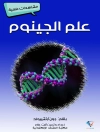This book provides an essential overview of existing state-of-the-art quantitative imaging methodologies and protocols (intensity-based ratiometric and FLIM/ PLIM). A variety of applications are covered, including multi-parametric quantitative imaging in intestinal organoid culture, autofluorescence imaging in cancer and stem cell biology, Ca2+ imaging in neural ex vivo tissue models, as well as multi-parametric imaging of p H and viscosity in cancer biology. The current state-of-the-art of 3D tissue models and their compatibility with live cell imaging is also covered. This is an ideal book for specialists working in tissue engineering and designing novel biomaterial.
Зміст
Current state-of-the-art 3D tissue models and their compatibility with live cell imaging.- Simultaneous Phosphorescence and Fluorescence Lifetime Imaging by Multi-Dimensional TCSPC and Multi-Pulse Excitation.- Quantitative live cell FLIM imaging in three dimensions.- Three-dimensional tissue models and available probes for multi-parametric live cell microscopy: a brief overview.- Fabrication and handling of 3D scaffolds based on polymers and decellularized tissues.- Multi-parametric imaging of hypoxia and cell cycle in intestinal organoid culture.- Imaging of intracellular p H in tumor spheroids using genetically encoded sensor Syp Her2.- Application of fluorescence lifetime imaging (FLIM) to measure intracellular environments in a single cell.- Quantitative imaging of Ca2+ by 3D-FLIM in live tissues.- Live cell imaging of viscosity in 3D tumour cell models.- Live imaging of cell invasion using a multicellular spheroid model and lightsheet microscopy.- Raman imaging microscopy for quantitative analysis of biological samples.
Про автора
Ruslan I. Dmitriev graduated from Lomonosov Moscow State Academy of Fine Chemical Technology (MSc) and Shemyakin-Ovchinnikov Institute of Bioorganic Chemistry (Ph D, 2008), where he studied membrane ion-transporting proteins and protein interactions. He trained as postdoc at University College Cork, focusing on cell metabolism, hypoxia research and development and biological applications of cell-penetrating phosphorescent probes for molecular oxygen. Since 2014, he leads Metabolic Imaging group at University College Cork, where he designs novel biocompatible FLIM and PLIM biosensors for 3D tissue models for regenerative medicine and cancer biology.












